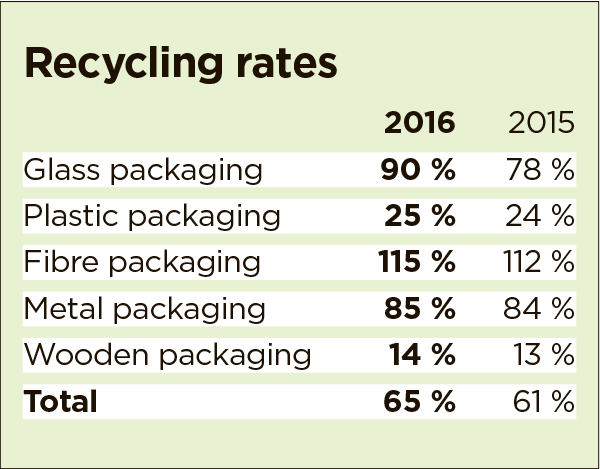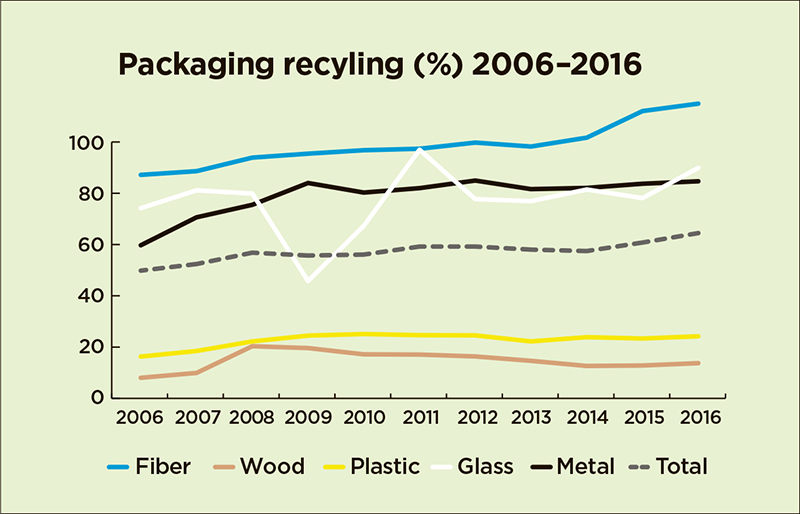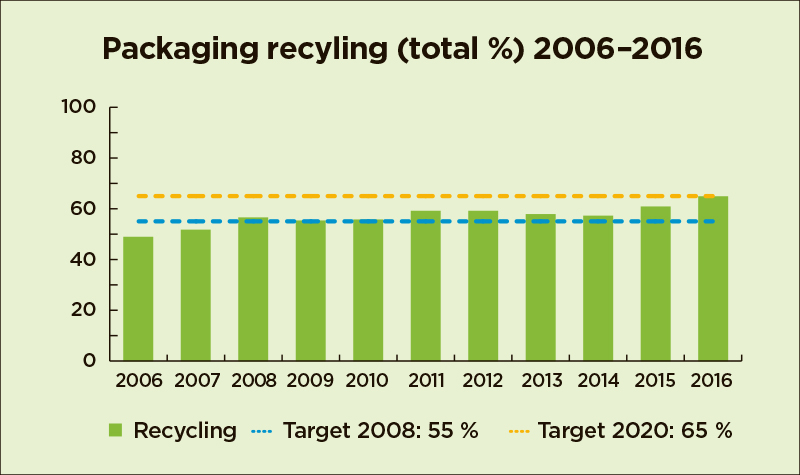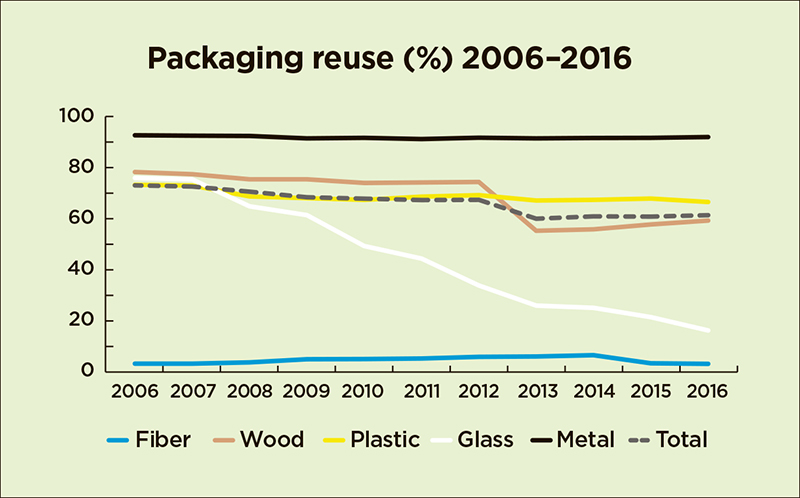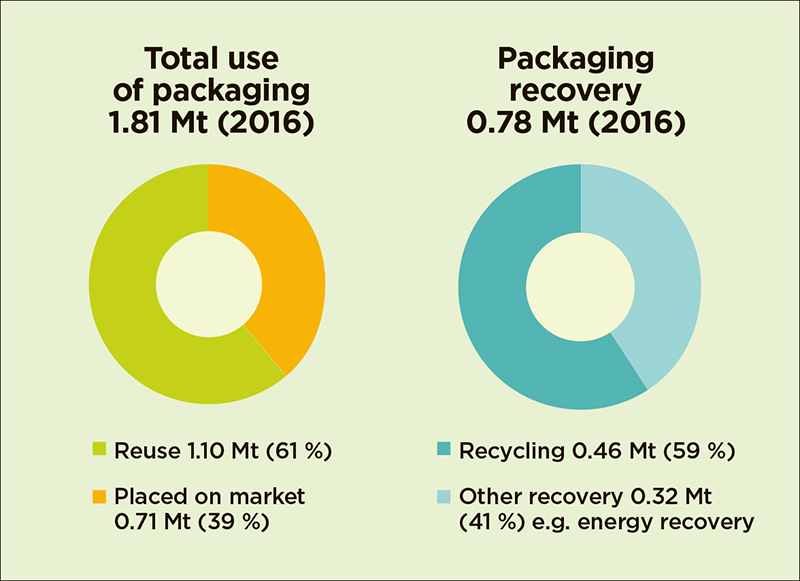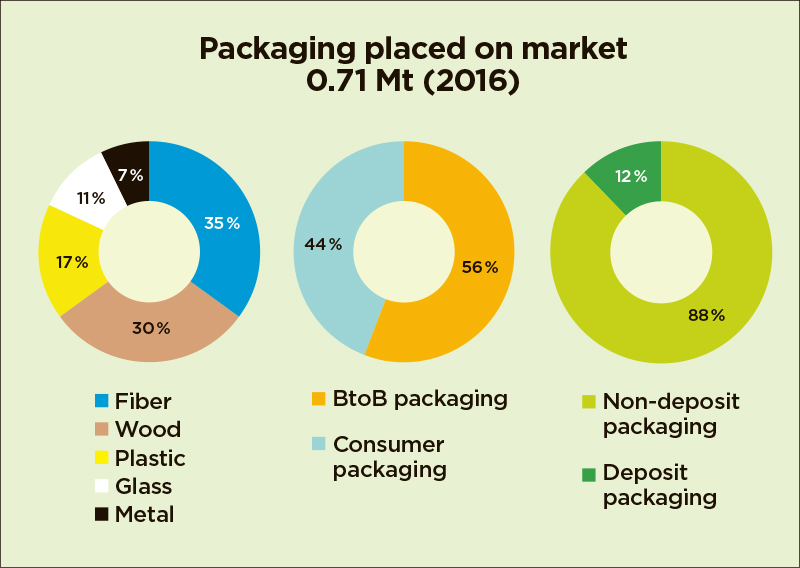More packaging waste recycled
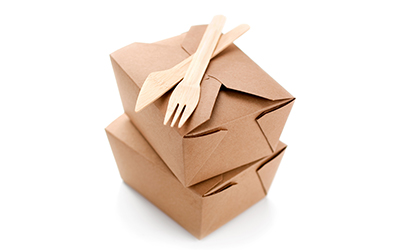
Approximately 129 kilogrammes of packaging waste per Finn was produced in 2016, which is one kilogramme less than in the previous year. In the EU, the average amount per capita was 166 kilogrammes in 2015.
“The amount of packaging waste generated in Finland is reduced by the reuse of packaging, which means that the packaging is reused for the same purpose. The reuse rate is significant for the metal, wooden and plastic packaging used for transport,” explains Maija Peltola, Customer Service Manager at Finnish Packaging Recycling RINKI Ltd.
In 2016, the recycling rate for packaging waste rose to 65% from 61% in the previous year. The reuse rate also rose by one percentage point from the previous year to 61%, although the rate for glass and plastic packaging went down.
The volume of new packaging placed on the market was lower than the previous year. The volume of glass, plastic and metal packaging grew slightly, but the volume of wooden and fibre packaging decreased.
Separate requirements for non-deposit packaging
A new feature was introduced in 2016: non-deposit packaging had separate, producer-specific recycling requirements for the first time. The required recycling rates were achieved for all other materials except for wooden packaging.
The 90% recycling requirements for deposit beverage packaging was exceeded for all materials, i.e. glass, plastic and metal.
The targets will be further tightened
“The overall packaging waste recycling rate has been going in the right direction, but the recycling requirements for individual materials for 2020 defined in the Packaging Waste Regulation will be a challenge to achieve,” says Maija Peltola.
According to the recycling requirements set in the Packaging Waste Regulation, at least 5% more fibre, metal and wooden packaging should be recycled in 2020 compared to the 2012 level, while this figure is 10% for glass packaging and 20% for plastic packaging.
“This means that the volumes of recycled metal, wooden and plastic packaging have to be further increased from the 2016 level.”
The EU also published the new packaging waste recycling targets for 2025 and 2030 in May.
“The targets are particularly strict for plastic and wooden packaging. The EU is also reforming the recycling rate calculation rules, which may lower the recycling volumes and make it harder to achieve the targets,” Peltola points out.
The objectives of the new directive need to be brought into the Member States’ national legislation and into force by July 2020 at the latest.
26.9.2018
Text Susanna Haanpää
